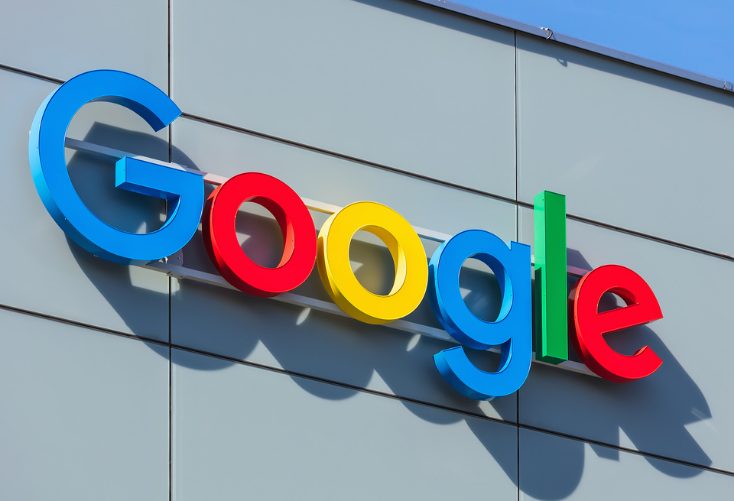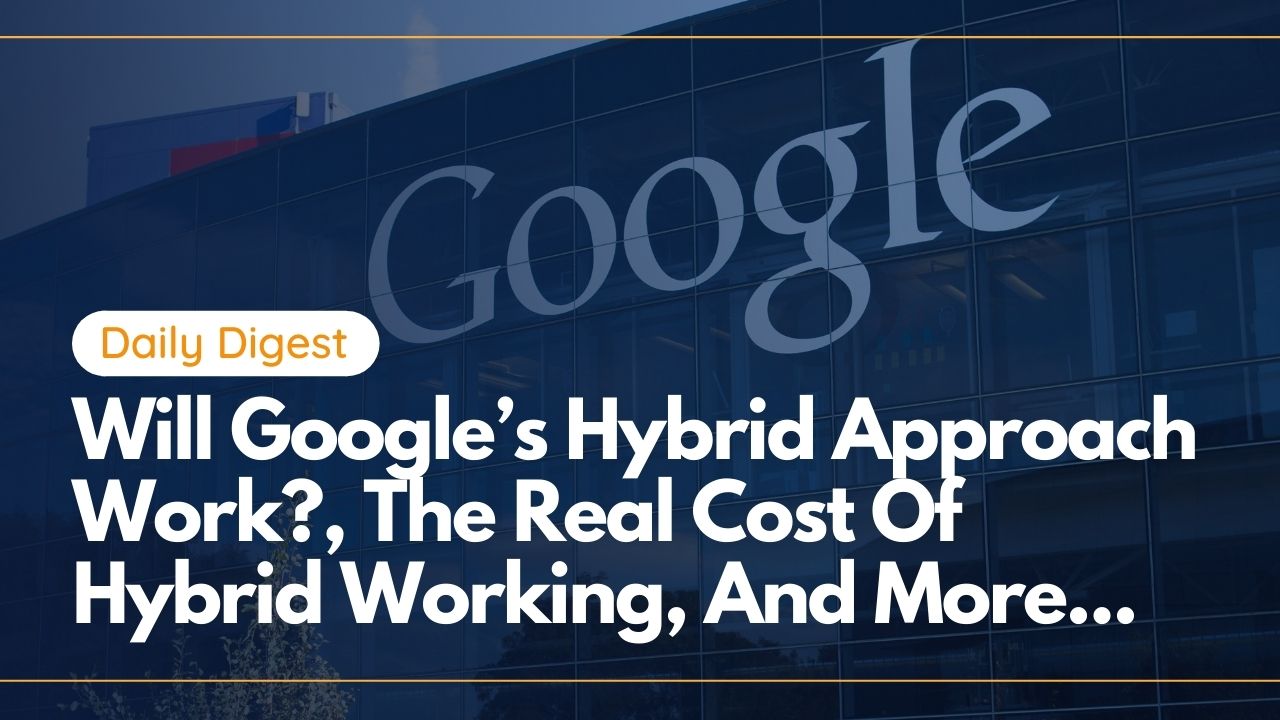Hand selected flexible workspace news from the most reliable sources to keep you ahead of the pack. We find all the latest news, so you don’t have to. Morning and afternoon updates. Stay in the know.
Here’s what you need to know today:
- April Marked Fourth Month Of Office Recovery
- Manchester Building Transformed Into Modern Workspace
- The Real Cost Of Hybrid Working
- Inside Adam Neumann’s Cushiony Exit Package
- Will Google’s Hybrid Approach Work?
- Approaching The Reopening Of The Workplace
April Marked Fourth Month Of Office Recovery
The VTS Office Demand Index (VODI) determined that April marked the fourth month of recovery as the office industry slowly approaches its pre-pandemic levels.
The VODI tracks in-person and virtual tours of offices, and at the moment demand is at 15% of the pre-pandemic benchmark.
However, all markets also saw an anticipated deceleration in demand in April. For instance, Los Angeles and Washington D.C. saw demand pull back. On the other hand, New York witnessed its biggest growth in demand during April, growing 16 index points from March.
“If it were any other year, I would be telling you that demand for office space will absolutely pull back in late spring, but this is unlike any other year,” said Nick Romito, CEO of VTS. “Companies are making strategic decisions on when they want to return to work and planning for their future with little regard for the calendar. I expect that it will take at least another six months before the market behaves in a typical manner.”
Chicago has also had an uptick in demand, experiencing an overall growth of 154.8%. Now, the market is above its February 2020 levels. Still, demand remains 21.1% below its pre-pandemic benchmark.
Overall, while it is clear that tours are increasing in many areas, adjustments to office space requirements are on the horizon. In fact, a survey from MRI Software and CoreNet Global found that 71% of commercial occupiers have altered their approach to space usage.

Manchester Building Transformed Into Modern Workspace
Formerly known as Lowry House, Manchester’s 16-story building Bloc has completely revamped its amenities to focus on work, wellbeing and the occupant experience.
The space, which office designer CubicWorks helped contract, is part of office provider Bruntwood’s £50 million Pioneer redevelopment program that is focused on building community-driven workspaces.
“Bloc’s transition from a corporate office building to a wellbeing-focused workplace is game-changing for Manchester, and we have responded directly to what businesses and their employees expect from a modern workspace,” said Ciara Keeling, CEO of Bruntwood Works. “We’re seeing increased demand for quality spaces that not only provide a wealth of amenities, but support positive work-life balance and create an environment where people want to spend time – both in and outside of work.”
The building will feature everything from a bakery on the ground floor, a two-story living wall, an auditorium, events space and a coworking lounge.
The variety of coworking spaces, serviced office and traditional offices range from 500 square feet to 7,500 square feet and will include 200 desks, communal kitchens, a lounge area and meeting rooms.

The Real Cost Of Hybrid Working
New research from energyhelpline.com has identified the cost of hybrid working as more companies make the commitment to move forward with this work arrangement.
According to the analysis, workers are expected to pay around £890 each month on work-related expenditures, such as travel, rising energy bills and more.
High energy bills were the most notable expense for remote workers. For example, energyhelpline.com finds that each work-from-home day could cost an extra £49 per household each year compared to pre-pandemic times.
Additionally, the research revealed that 58% of UK office workers have noted how working from home is costing more from expenses for energy bills, snacks and house cleaning products.
However, older office workers aged 45-59 stated they have actually saved money throughout the pandemic due to decreased travel costs, clothes purchases and avoiding buying lunches.
Still, the UK’s younger workforce is struggling. In fact, 71% of workers aged 18 to 29 stated that working from home has cost them more than expected and returning to the office may not help with their financial stress.
“It’s astonishing that as many as four in five young office workers are currently paying for expenses which should be covered by their employers, especially at such a difficult time financially,” said Tom Lyon, director of energy at energyhelpline.com. “Businesses must tackle this head on, making clear what expenses they will cover and streamlining the process where possible.”

Inside Adam Neumann’s Cushiony Exit Package
Former WeWork CEO Adam Neumann pulled in a stock award worth around $245 million in February as part of his exit package from the coworking company.
Although the coworking founder’s golden parachute was less than the original $1.7 billion agreed upon, Neumann’s exit package still gave him $200 million in cash, allowed him to sell $578 million in WeWork Stock and refinance $432 million in debt.
In short, Neumann was awarded for almost tanking the company he founded.
“Generous would be an understatement,” said Conor Callahan, a professor at the University of Illinois at Chicago, who studies exit packages. “It’s going to be something people are going to be very upset about.”
Initially, SoftBank had agreed to purchase $3 billion in WeWork shares from stockholders, which included the $1 billion golden parachute.
However, SoftBank attempted to pull out of the deal last year. After Neumann filed a lawsuit against the Japanese conglomerate, an agreement was reached with him in February.

Will Google’s Hybrid Approach Work?
Google recently unveiled how it will approach hybrid working in the future, but is their method the best when it comes to this new way of operating?
The company’s strategy includes three days in the office and two days wherever employees work best. While in the office, workers will focus on collaborative and team-building tasks.
In mid-June, Google will have a process that allows employees to apply to move to another office or even full remote work opportunities.
Google will also incorporate work-from-anywhere weeks, allowing employees to choose where they want to work for up to four weeks each year with manager approval.
Sundar Pichai, CEO of Google, noted that these changes will see 60% of employees coming together in the office throughout the week, 20% working in new offices and the other 20% working from home.
However, some critics question specific aspects of Google’s new plan. For instance, why did the company settle on three days in the office? And will remote employees feel alienated from the rest of their team members?
“There was little justification behind why three days was selected,” said David Niu, CEO of employee engagement software company TINYpulse. “Returning to work is a complicated process. Given the huge impact that the transition to in-person work will have on employees’ lives, they want to have a voice in the process. Before formulating return-to-work plans, organizations should survey their employees to understand employees’ needs and concerns.”

Approaching The Reopening Of The Workplace
At the peak of the pandemic, analysts and experts alike predicted that the mass migration to remote working would mean the end of the office. Deep down, this was never true and as the world slowly begins to open back up, we know for a fact that the office is here to stay.
A Garter poll revealed that 69% of midsize companies are planning on reopening their offices during the second half of the year, but what policies and practices will have changed by then?
Although the survey found that the majority of employees support a vaccine mandate in order to allow workers back into the office, many companies plan on using an honor system. This leaves workers in the dark about who has actually been vaccinated, causing a potential health risk.
There have been talks about vaccine passports, but they are not exactly the most popular method of proving one’s vaccination status.
For instance, the pace in which they’re being developed is slower than when companies plan to reopen their offices. Additionally, some states have banned employers from using them, such as Texas and Florida. Employees have also stated privacy and legal concerns with this method.
So how can companies reopen their offices in a way that prioritizes the safety and productivity of employees? For starters, be overly communicative about when the workspace will be reopened and give ample time for workers to prepare for their return.
Additionally, detail your new hybrid work arrangements so employees have a clear view of what will be expected from them and what type of flexibility they will be granted.



 Dr. Gleb Tsipursky – The Office Whisperer
Dr. Gleb Tsipursky – The Office Whisperer Nirit Cohen – WorkFutures
Nirit Cohen – WorkFutures Angela Howard – Culture Expert
Angela Howard – Culture Expert Drew Jones – Design & Innovation
Drew Jones – Design & Innovation Jonathan Price – CRE & Flex Expert
Jonathan Price – CRE & Flex Expert














